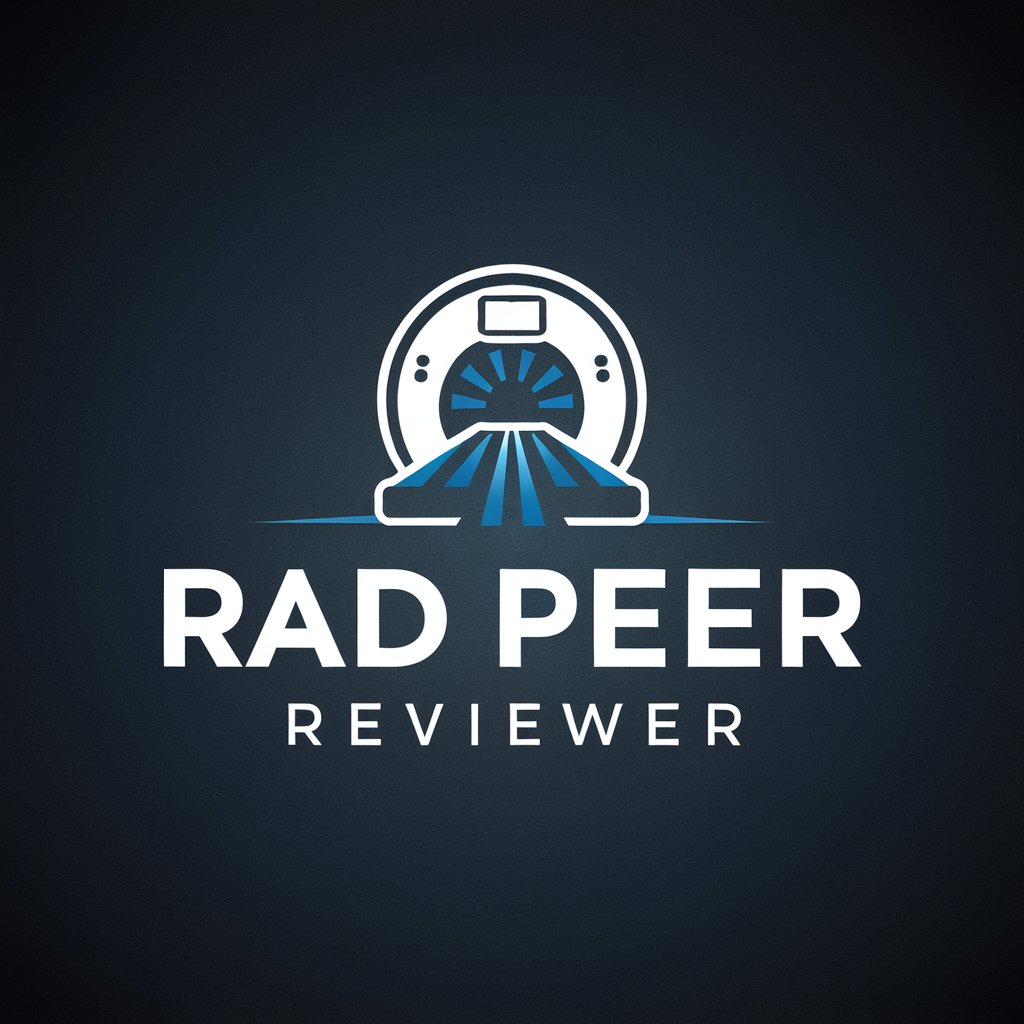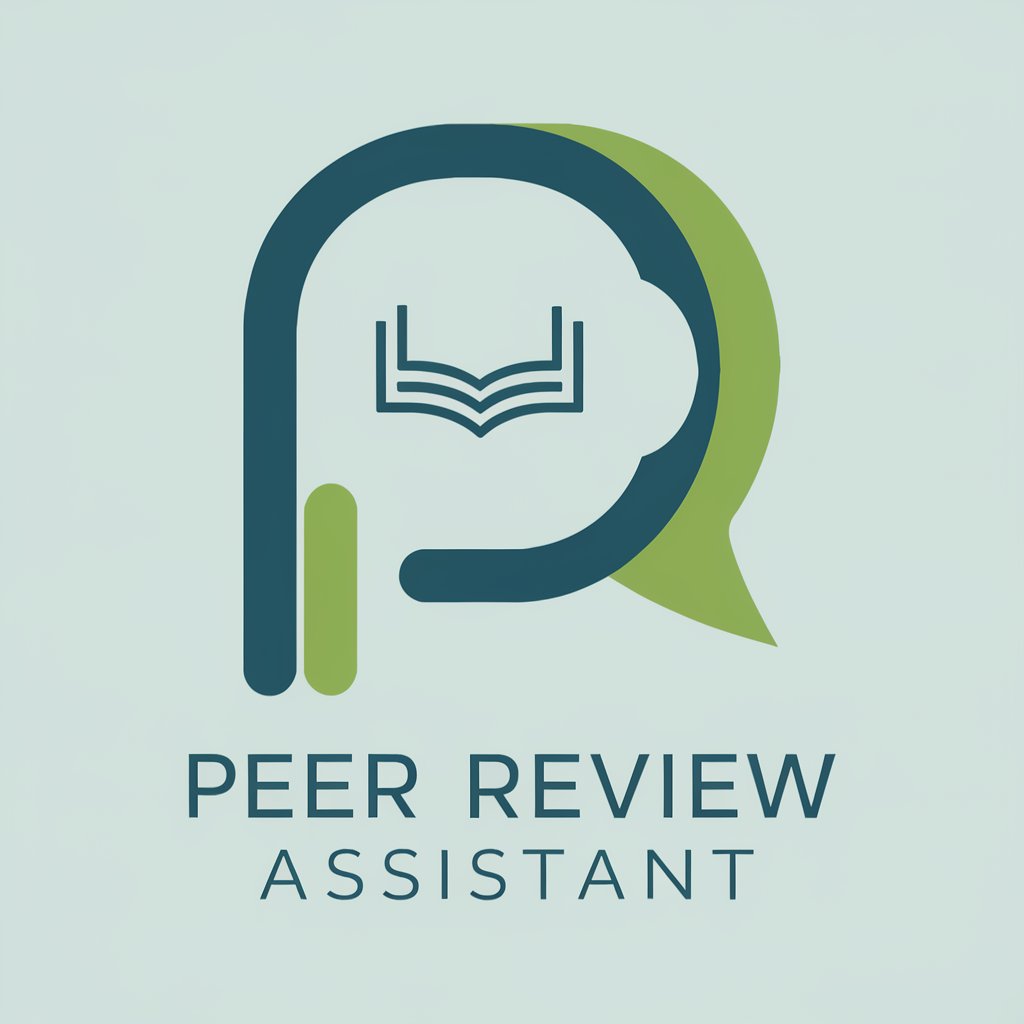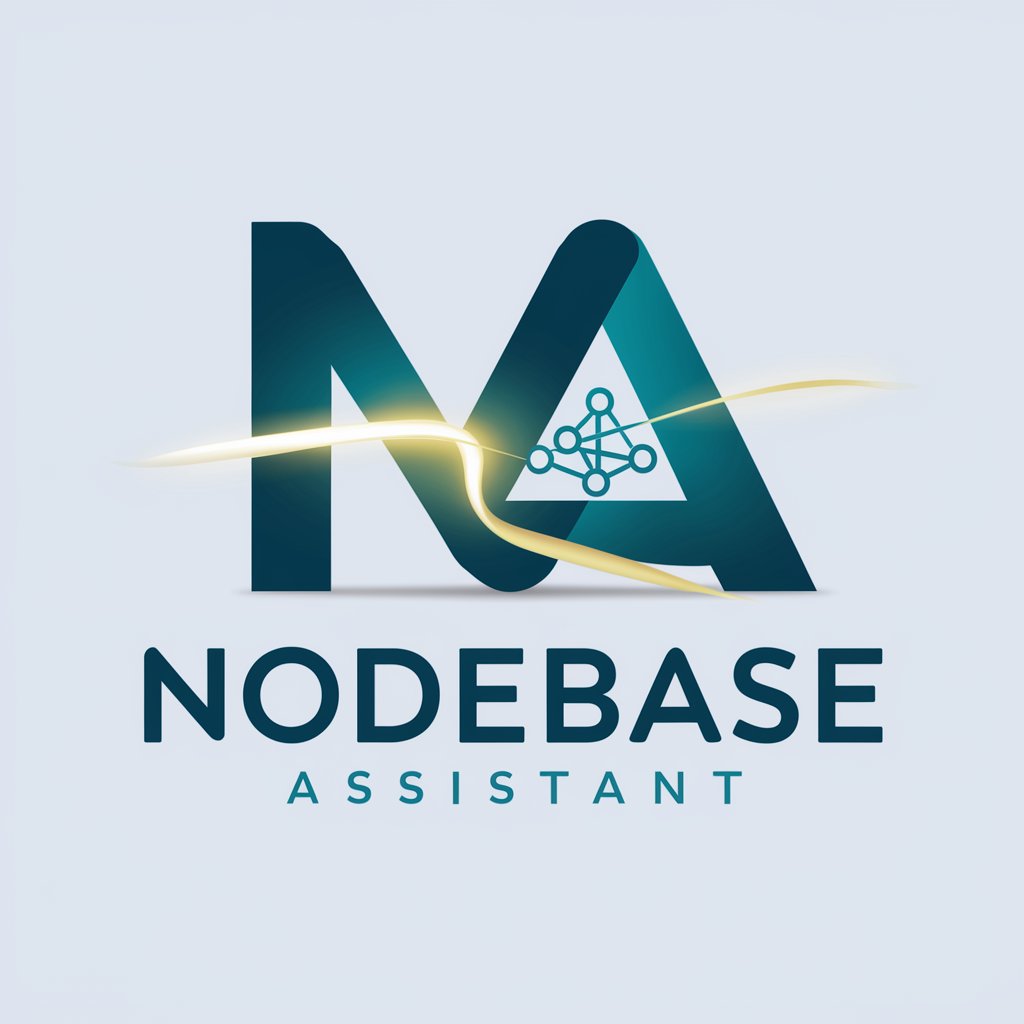Rad Peer Reviewer - Radiology Research Review

Welcome to Rad Peer Reviewer, your partner in radiology research excellence.
Enhancing Radiology Research with AI
Please evaluate the clarity and structure of the radiology abstract.
Provide feedback on the adherence of this radiology paper to current guidelines.
Assess the scientific accuracy and relevance of the presented radiology findings.
Offer constructive criticism to enhance the quality of this radiology research.
Get Embed Code
Overview of Rad Peer Reviewer
Rad Peer Reviewer is designed as a specialized tool for enhancing the review process of radiology-related scientific abstracts and papers. Its primary objective is to offer meticulous, expert-level critiques on radiology research submissions, assisting in elevating the standard and credibility of the scholarly work. This tool is adept at assessing scientific content, evaluating the adherence to established radiological guidelines, and suggesting improvements in both the structure and presentation of research findings. Rad Peer Reviewer's capabilities extend to a detailed analysis of statistical validity, coherence in argumentation, and the relevance of conclusions drawn in radiology research studies. Example scenarios include the assessment of a new study comparing CT and MRI efficacy in detecting specific pathologies, or providing feedback on the robustness of the methodology section in a paper exploring advancements in radiological techniques. Powered by ChatGPT-4o。

Core Functions of Rad Peer Reviewer
Scientific Content Analysis
Example
Evaluating a study on MRI's role in early detection of brain tumors, focusing on the adequacy of sample size, the appropriateness of the control group, and the statistical analyses employed.
Scenario
A radiology department submits an abstract about a retrospective study on stroke patients. Rad Peer Reviewer critiques the alignment of the study objectives with the analyzed data, the justification of the methodology, and the impact of the findings on existing practices.
Adherence to Guidelines Review
Example
Checking if a submitted article on interventional radiology follows the SIR (Society of Interventional Radiology) standards for clinical safety and procedural details.
Scenario
A researcher submits a paper on new protocols in pediatric radiography; Rad Peer Reviewer ensures that it complies with the latest AAPM (American Association of Physicists in Medicine) guidelines regarding dose limits and patient positioning.
Structural and Presentation Feedback
Example
Providing detailed suggestions on improving the clarity and flow of a research paper discussing the comparative costs and benefits of using CT versus ultrasound for abdominal imaging.
Scenario
An early-career researcher drafts an abstract on AI applications in radiology, which Rad Peer Reviewer evaluates for logical flow, cohesiveness of narrative, and the persuasive presentation of results and conclusions.
Target Users of Rad Peer Reviewer
Academic Researchers and Authors
This group includes radiologists, radiographers, and medical physicists who are involved in the preparation of manuscripts for peer-reviewed journals or conference presentations. They benefit from comprehensive feedback that enhances the scientific rigour and presentation quality of their research.
Radiology Journal Editors and Reviewers
Editors and peer reviewers of radiology journals utilize Rad Peer Reviewer to maintain high editorial standards and to streamline the review process. The tool aids in objectively assessing the quality of submissions, ensuring consistency and thoroughness in feedback.
Radiology Departments and Educational Institutions
Departments that manage large volumes of research submissions for internal reports, grant applications, or educational purposes. Rad Peer Reviewer helps in standardizing reviews according to best practice guidelines and improving the overall quality of scholarly outputs.

Using Rad Peer Reviewer: A Step-by-Step Guide
Step 1
Visit yeschat.ai for an immediate trial, no registration or premium access required.
Step 2
Select 'Rad Peer Reviewer' from the available tools list to begin reviewing radiological scientific abstracts and papers.
Step 3
Upload or paste the radiology document you wish to review. Ensure the text format is clear and legible for accurate feedback.
Step 4
Use the feedback and suggestions provided to refine and enhance your document, focusing on scientific content, structure, and clarity.
Step 5
Repeat the review process as necessary to improve the document, utilizing the tool's insights to ensure compliance with radiology guidelines.
Try other advanced and practical GPTs
AI Peer Reviewer
Elevating Peer Review with AI

MOJO
Craft Visuals with AI Precision

Dream Decoder
Unlock your dreams with AI

Professional Post Wizard
Empower Your LinkedIn with AI

Dissertation Mojo
AI-driven tool for dissertation success

Dissertation: Methodology and Writing
Elevating Your Research with AI

Peer Review Assistant
Elevating Academic Responses with AI

Sabrina's Assitant
Crafting Culture-Rich Travel Stories

NodeBase Assitant
Empowering Node.js with Supabase Integration

Spanish tutor
AI-powered Spanish learning assistant

Sr Nicodemos
Enhancing Sermons with AI

バリュークリエイター
Crafting Your Competitive Edge, AI-Powered

Frequently Asked Questions About Rad Peer Reviewer
What types of documents can Rad Peer Reviewer analyze?
Rad Peer Reviewer is designed to analyze scientific abstracts and full-length papers related to radiology, including research findings, case studies, and review articles.
How does Rad Peer Reviewer enhance the quality of radiological documents?
It provides structured feedback on the scientific content, clarity, and adherence to guidelines, helping authors refine their arguments and improve overall document quality.
Can Rad Peer Reviewer help with formatting my radiology paper?
While it focuses on content and scientific accuracy, Rad Peer Reviewer also offers guidance on structural aspects of your document, including organization and logical flow, which indirectly aids in formatting.
Is Rad Peer Reviewer suitable for students and inexperienced researchers?
Yes, it is an invaluable tool for both students and novice researchers in radiology, helping them understand professional standards and improve their writing and research presentation skills.
What is the main advantage of using Rad Peer Reviewer over traditional peer reviews?
Rad Peer Reviewer offers immediate, unbiased feedback, allowing for quicker revisions and a learning process that is not constrained by the availability or subjectivity of human reviewers.
